 W
WLeeches are segmented parasitic or predatory worms that belong to the phylum Annelida and comprise the subclass Hirudinea. They are closely related to the oligochaetes, which include the earthworm, and like them have soft, muscular, segmented bodies that can lengthen and contract. Both groups are hermaphrodites and have a clitellum, but leeches typically differ from the oligochaetes in having suckers at both ends and in having ring markings that do not correspond with their internal segmentation. The body is muscular and relatively solid, and the coelom, the spacious body cavity found in other annelids, is reduced to small channels.
 W
WAcanthobdella is a genus of leeches containing 2 species.Acanthobdella livanowi (Epshtein, 1966) Acanthobdella peledina Grube, 1851
 W
WAcanthobdella peledina is a species of leech in the infraclass Acanthobdellidea. It feeds on the skin and blood of freshwater fishes in the boreal regions of northern Europe, Asia and North America.
 W
WAcanthobdellidea is an infraclass of primitive leeches; some authors place them in a separate subclass from the Hirudinea. However, the World Register of Marine Species places them within the Hirudinea, as a sister group to Euhirudinea, the true leeches.
 W
WAmericobdella is a genus of carnivorous leeches from southern Chile, comprising only the species Americobdella valdiviana.
 W
WArhynchobdellida, the proboscisless leeches, are classified as an order of the Hirudinea, but leech taxonomy and systematics should eventually be revised, not because of the many uncertainties exist about their phylogeny, but because the major clades of clitellate annelids - and whether the clitellates are themselves are a clade - have not been fully elucidated. For example, the "true leeches" (Euhirudinea) might actually be synonymous with the Hirudinea, as all other leech-like annelids might not be very closely related to the true leeches.
 W
WBarbronia weberi is a species of predatory freshwater leech in the family Salifidae. It is native to southeastern Asia but has spread to other parts of the world, including Australia, South America, southern Europe and the United States.
 W
WChtonobdella limbata is a species of blood sucking leech, found in New South Wales, Australia, and referred to as the Australian bush leech. This species was described in 1866 by the German naturalist Adolph Eduard Grube. A variant name, Gnathobdellida limbata, sometimes appears in the literature.
 W
WErpobdella is a genus of leeches in the family Erpobdellidae. Members of the genus have three or four pairs of eyes, but never have true jaws, and are typically 20–50 millimetres (0.8–2.0 in) long. All members do not feed on blood, but instead are predators of small aquatic invertebrates, which they often swallow whole.
 W
WErpobdella octoculata is a predatory annelid in the Erpobdellidae family.
 W
WErpobdellidae is a family of leeches. It is one of the four families belonging to the suborder Erpobdelliformes of the proboscisless leeches order, Arhynchobdellida.
 W
WThe Erpobdelliformes are one of the currently-accepted suborders of the proboscisless leeches (Arhynchobdellida). It includes four families:Erpobdellidae Blanchard, 1894 Gastrostomobdellidae Richardson, 1971 Orobdellidae Nakano, Ramlah & Hikida, 2012 Salifidae Johansson, 1910
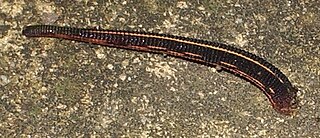 W
WEuhirudinea, the true leeches, are an infraclass of the Hirudinea. These clitellate annelids are of somewhat unclear relationships; namely the relationships of Hirudinea with oligochaetes are in need of revision. It may be that the presumed sister taxon of the Euhirudinea, the Acanthobdellidea, turns out to be more distantly related, as was already the case with the Branchiobdellida. Thus, eventually Euhirudinea might become a junior synonym of Hirudinea.
 W
WGlossiphoniidae are the family called freshwater jawless leeches or glossiphoniids. They are one of the main groups of Rhynchobdellida, true leeches with a proboscis. These leeches are generally flattened, and have a poorly defined anterior sucker. Most suck the blood of freshwater vertebrates like amphibians and aquatic turtles, but some feed on the hemolymph of invertebrates like oligochaetes and freshwater snails instead.
 W
WHaemadipsa is a genus of leeches, with members commonly known as jawed land leeches. These annelids are known from subtropical and tropical regions around the Indian and Pacific Ocean. Well-known Haemadipsa are for example the Indian Leech and the yamabiru or Japanese Mountain Leech. Members of the genus feed on blood. They are troublesome to humans and animals especially because their bites result in prolonged bleeding.
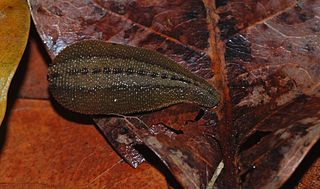 W
WHaemadipsa interrupta is a terrestrial leech found in the Malay Peninsula. It was described by John Percy Moore.
 W
WHaemadipsa picta is a large terrestrial leech found in Borneo, Indochina, and Taiwan. It was described by John Percy Moore based on specimens collected from Sarawak, Borneo. It preys primarily on medium- to large-sized mammals, including humans.
 W
WHaemadipsidae are a family of "jawed leeches". They are a monophyletic group of hirudiniform proboscisless leeches. These leeches have five pairs of eyes, with the last two separated by two eyeless segments. The family is monotypic, containing only the subfamily Haemadipsinae, though as the family can apparently be divided into two or three distinct lineages, at least one of the proposed splits, while not a distinct family, might be a valid subfamily.
 W
WHaementeria ghilianii, the giant Amazon leech, is one of the world's largest species of leeches. It can grow to 450 mm (17.7 in) in length and 100 mm (3.9 in) in width. As adults, these leeches are a greyish-brown colour, as opposed to juveniles, which do not have a uniform colour, but rather, a noncontinuous stripe of colour, and patched colouring. They live from the Guianas to the Amazon. The leech produces the anticoagulant protease hementin from its salivary glands.
 W
WHaemopis sanguisuga, commonly called the horse-leech, is a species of leech in the genus Haemopis.
 W
WThis animal is a genius of leeches in the family Glossiphoniidae, the freshwater jawless leeches. They occur worldwide.
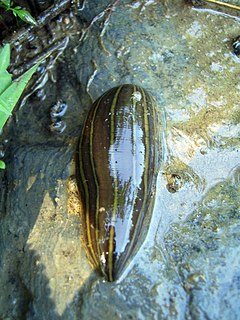 W
WHirudinidae is a family of leeches that contains 10 genera.
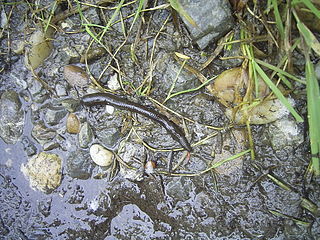 W
WThe Hirudiniformes are one of the currently-accepted suborders of the proboscisless leeches (Arhynchobdellida). Their best-known member is the European medical leech, Hirudo medicinalis, and indeed most of the blood-sucking "worms" as which leeches are generally perceived belong to this group. In general, though some leeches suck blood, many are predators which hunt small invertebrates.
 W
WHirudo is a genus of leeches of the family Hirudinidae. It was described by Carl Linnaeus in his landmark 1758 10th edition of Systema Naturae.
 W
WHirudo medicinalis, the European medicinal leech, is one of several species of leeches used as "medicinal leeches".
 W
WHirudo sulukii is a species of leech that has been found from Kara Lake of Adiyaman, Sülüklü Lake of Gaziantep and Segirkan wetland of Batman in Turkey.
 W
WHirudo verbana is a species of leech.
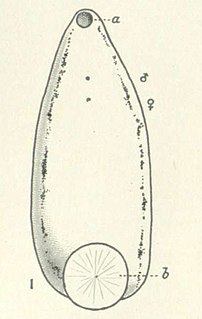 W
WHirudobdella antipodum is a terrestrial leech found only on the Open Bay Islands in New Zealand. It preys on the feet of nesting seabirds. Its numbers have been reduced significantly by introduced weka, and the entire remnant population of the leech is now living beneath a single boulder.
 W
WThe Kinabalu giant red leech is a large bright orange-red coloured leech that is endemic to Mount Kinabalu, Borneo. It can grow to a length of over 50 cm (20 in).
 W
WLimnatis nilotica is a species of leech in the family Hirudinidae. It is hematophagous, living on the mucous membranes of mammals.
 W
WThere are 20 species of leeches living in the wild in the Czech Republic.
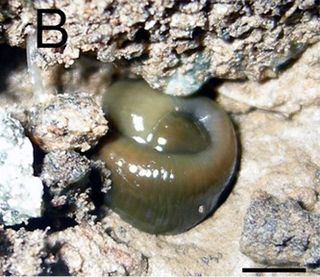 W
WOrobdella masaakikuroiwai is a species of proboscisless leech from Japan.
 W
WPhytobdella catenifera is a large terrestrial leech found in Peninsular Malaysia. John Percy Moore chose this species’ epithet ‘catenifera’ after the striking chain-striped pattern on the creature's back.
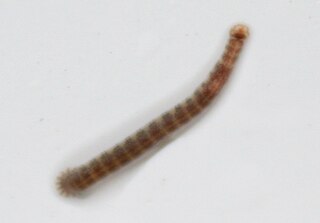 W
WPiscicola geometra is a species of leech in the family Piscicolidae. It is an external parasite of marine, brackish and freshwater fishes. It was first described as Hirudo geometra by the Swedish naturalist Carl Linnaeus in his Systema Naturae in 1758.
 W
WThe Piscicolidae are a family of jawless leeches in the order Rhynchobdellida that are parasitic on fish. They occur in both freshwater and seawater, have cylindrical bodies, and typically have a large, bell-shaped, anterior sucker with which they cling to their host. Some of the leeches in this family have external gills, outgrowths of the body wall projecting laterally, the only group of leeches to exchange gases in this way.
 W
WPlacobdella parasitica is a species of leech. Leeches are habitual ectoparasites of vertebrates in aquatic environments. Placobdella parasitica is differentiated from other members of the genus Placobdella by its smooth dorsal surface, simple to complicated pigmentation, and abdomen with 8 to 12 stripes.
 W
WPlacobdelloides is a genus of glossophoniid leeches.
 W
WPlacobdelloides siamensis is a species of blood-feeding jawless leech in the family Glossiphoniidae. It is commonly known as the Siam shield leech and is a prevalent ectoparasite on Malayemys turtles but has a range of Geoemydidae hosts. In high numbers it can cause severe anaemia and malnutrition which can lead to the death of its host.
 W
WPontobdella muricata is a species of marine leech in the family Piscicolidae. It is a parasite of fishes and is native to the northeastern Atlantic Ocean, the Baltic Sea, the North Sea, and the Mediterranean Sea.
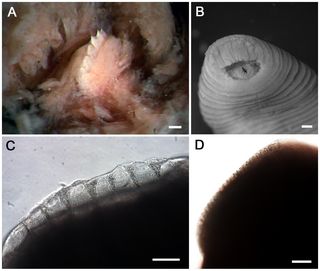 W
WPraobdellidae is a family of hematophagous leeches which live on the mucous membranes of mammals. These are internal parasites that enter the body through natural orifices, and cause hirudiniases.
 W
WRhynchobdellida, the jawless leeches, although paraphyletic, are classified as an order of the Hirudinea. But leech taxonomy and systematics will eventually be revised in due time, not because there are many uncertainties about their phylogeny, but because the major clades of clitellate annelids – and whether the clitellates are themselves a clade – have not been fully elucidated. For example, the "true leeches" (Euhirudinea) might actually be synonymous with the Hirudinea, as all other leech-like annelids might not be very closely related to the true leeches.
 W
WTurtle leeches are a genus, Ozobranchus, of leeches (Hirudinea) that feed exclusively on the blood of turtles. Only two species – Ozobranchus margoi and Ozobranchus branchiatus – are found in the Atlantic coast of the United States and the Gulf of Mexico. Little is known about these leeches due to difficulties in studying their sea turtle hosts.
 W
WTyrannobdella rex is a species of leech found in South America in the upper reaches of the Amazon. This newly found genus of leech takes sustenance from the mucous membranes of the mammalian upper respiratory tract, and is known to feed upon humans. It has eight teeth. Tyrannobdella rex was discovered feeding upon the mucous membrane of a girl who had recently bathed in the upper Amazon in Peru.
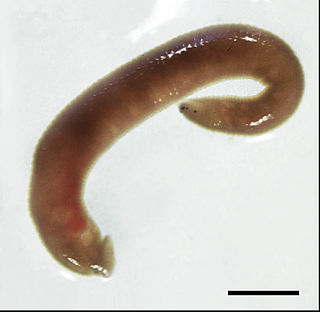 W
WXerobdellidae are a small family of "jawed leeches". The latter might be a natural, monophyletic group of hirudiniform proboscisless leeches. Xerobdellidae have three jaws and five pairs of eyes, the fourth and fifth being separated by one or two eyeless segments. One each of the mere three genera placed herein occurs in Chile (Mesobdella) and Europe (Xerobdella). Diestecostoma is more widespread and found in Central and northern South America. This peculiar distribution strongly suggests they are a relict Pangaean group, which had already been present by the start of the Jurassic 250 million years ago.